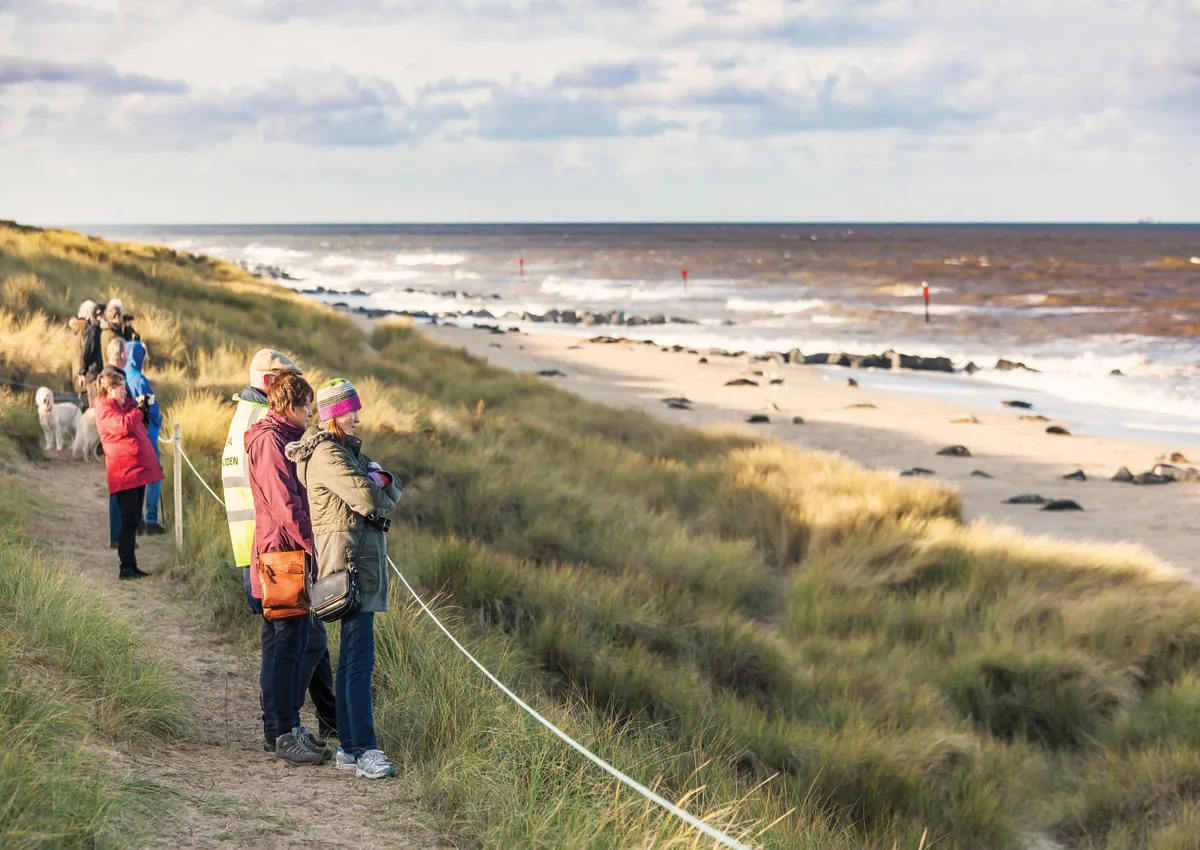Blakeney Point National Nature Reserve has seen the birth of its first grey seal pup of the breeding season, in what is predicted to be a record-breaking year for the reserve’s seal population. The first pup was spotted on Friday 29 October – six days later than last season – at the very end of Blakeney Point. Since then, rangers have seen five more.
Chris Bielby, countryside manager for the National Trust on the North Norfolk Coast was proud to announce the birth of the first pup of the season. ‘It’s always a special moment in our year. Our job now over the coming weeks is to try to ensure that the seals remain undisturbed so that they can give birth in peace, and to ensure they don’t abandon their pups which would mean that they wouldn’t survive.’
Since the first grey seal pup was born at Blakeney Point in 1988, the National Trust reserve has become England’s largest seal colony. Numbers have been increasing year on year since 1999, with just 25 pups born here in 2001 – by 2020 births had soared to 4,000. This year, it’s anticipated there may be as many as 4,500 new arrivals. The newborns can be spotted as they have a yellow coat, which turns white after a couple of days.
Chris says at the peak of the breeding season in mid-December, there can be as many as 10,000 seals in the colony, with cows, bulls and pups onshore. After their pups are weaned at three weeks old, the cows start heading back to sea, and as soon as the pups shed their white coats after weaning and gain their waterproof fur they also disperse. ‘By the end of January to mid-February they are almost all gone – it’s quite amazing.’
Blakeney Point’s remoteness and the lack of predators make it the perfect breeding ground for seals, says Chris. ‘It has gently sloping sand and shingle so it’s easy for the seals to come onshore and they are not battered by the waves, so it’s a good place for them to bring up their pups. There’s also plenty of space here and there’s room for more,’ adds Chris.

Until a couple of years ago, rangers would walk among the seals counting every pup to monitor the population. ‘Now it’s impossible to do that without disturbing them so we only count a small subsection of the colony to give us an understanding of how many are there,’ explains Chris. ‘We are also working with St Andrews University who are taking aerial photographs of Blakeney and we can also estimate numbers from those.’
The global population of grey seals is thought to be around 300,000, with British and Irish waters supporting around 40% of them. A female grey seal typically lives to around 35 years of age and reaches sexual maturity at around three to five years old. Once a cow has had her first pup, she will return to the same place each year to give birth, typically to a single pup.
Britain’s best seal-watching spots and how to avoid disturbing the colony
Spotting a seal colony is one of Britain's great wildlife spectacles. Our guide explains how to spot seals without disturbing the colony, the best seal watching spots in the UK, plus how to identify harbour seals and grey seals.
/Credit: Getty Images

To visit the colony, Chris advises taking a seal boat trip for the best views; the boats leave from Morston Quay. Another option is to start at Cley Beach car park and take the four-mile walk across the shingle to a hide on the edge of the colony, where National Trust volunteers are on hand. But Chris warns, it’s important to keep your distance and not disturb the animals. ‘Seals are wild animals and can be dangerous, particularly if they feel threatened. Bring your binoculars so you can keep a safe distance away.’
For more information on how to see the seal pups on Blakeney Point, visit https://www.nationaltrust.org.uk/blakeney-national-nature-reserve/features/seeing-the-seals-at-blakeney-point
Main image credit: First grey seal pup at Blakeney Point, November 2021. /Credit: Hanne Siebers/National Trust.
